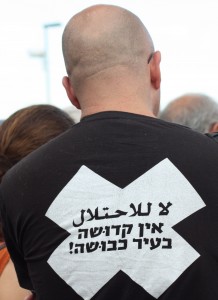My new column is up at The American Prospect:
Lt. Gen. Ashkenazi stood at a lectern last week wearing the kind of size XXL skullcap that is the social marker of Orthodox settlers, praising an army program that is the pride of Israel’s religious right. He looked slightly bashful. Ashkenazi, Israel’s military chief of staff, lives in a rather boring suburb of Tel Aviv, not a West Bank settlement. He’s not an Orthodox Jew, so he usually doesn’t wear a hat or skullcap, except for formal occasions when he puts on his military beret. As a military man, he’s officially not a politician. Then again, you don’t get appointed to head the Israel Defense Forces without a sharp sense of which way the political winds are blowing.
Before I get into the details, let me note several implications of this incident. It demonstrates, yet again, that when politicians create an alliance between the state and a religious movement, the outcome is lose-lose for both. In the strictly Israeli context, it shows the growing dependence of the army on soldiers and officers from the Orthodox right, whose commitment to implementing democratic decisions is a touch iffy. And a major reason for that dependency (I know this is a terrible surprise) is the ongoing occupation of the West Bank.






